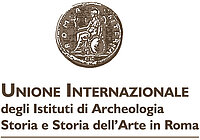PALEO. Diversity of ancient Paleolithic cultural expressions in Italy. Centre / South Interactions
- Section: Antiquity
- Directors: Élisa Nicoud, researcher at the CNRS (UMR 7264 CEPAM); Roxane Rocca, postdoc UMR 7041-ArScAn, team AnTET; Marta Arzarello, researcher, University of Ferrara ; Daniele Aureli, postdoc University of Siena; Marco Peresani, associate professor, University of Ferrara
Presentation
The centre-south of Italy has a surprising wealth of human occupation from the lower Paleolithic (1.4 to 0.12 Ma). The diversity of technological systems and models of cultural structuring of space seem to testify to the pioneering role of the region on a Mediterranean and European scale. This programme aims to understand the initial dynamics of human settlement in this macro-region, by obtaining quality primary data through multidisciplinary fieldwork studies and the analysis of many lithic collections, using new approaches.
The first research focus (directed by E. Nicoud and M. Peresani) covers central Italy and revolves around well-initiated research at Valle Giumentina (Abruzzo). Using already established geochronological and cultural foundations, other sites of Abruzzo, Latium and Marche will be re-evaluated. Multidisciplinary studies on the Cingoli deposit in the Marche will begin, a starting point for future research in this region.
The second research focus (directed by R. Rocca, M. Arzarello, D. Aureli) mainly focuses on the lower Paleolithic in the south of the peninsula, in particular the study of the site of Cimitero di Atella in Basilicata. The continuation of research that began several years ago on the sites of Ficoncella and Quarto delle Cinfonare, and the study of old collections (Riparo Paglicci, Campoverde), will enrich our knowledge of this region.
The density and variety of Italian sites are well known, but ancient discoveries deserve a systematic reassessment (dating, palaeoenvironments, lithic industries, site function) and new data needs to be brought to light. Robust syntheses should be developed, using the same approaches to construct new theoretical frameworks.
A well thought-out comparison between the central and southern areas of the peninsula will help us to reconstruct the movements of the first populations to and from Italy within a Euro-Mediterranean context. Is it an innovative region, a refuge zone or a hub?
Key words
Paleolithic, Mediterranean, Italy, Settlement, Valle Giumentina, Cimitero di Atella, Ficoncella, Quaternary
Key statistics
4 paleolithic sites being excavated
10 sites restudied
15 European partners
More than 50 quaternary specialists
Links for more information
Valle Giumentina
FILMS
PUBLICATIONS
- Excavation campaigns at Valle Giumentina in the "Chronique des activités archéologiques de l'École française de Rome"
- https://doi.org/10.1016/j.quascirev.2018.01.014
- http://dx.doi.org/10.1016/j.quascirev.2016.11.029
- http://amq.aiqua.it/images/joomd/AMQ2927Villa193-199.pdf
- http://dx.doi.org/10.1016/j.quascirev.2016.09.006
- https://afeq.hypotheses.org/1626
- http://dx.doi.org/10.1016/j.quaint.2015.08.080
- http://mefra.revues.org/2659
- http://mefra.revues.org/2658
Atella
Partners
Principal partners
École française de Rome
CNRS, UMR 7264 CEPAM
UMR 7041-ArScAn, équipe AnTET
University of Ferrara, Department of Humanities, Prehistoric science and Anthropology
University of Siena, Department of Physical Sciences, Earth and Environment, U.R. Prehistory and Anthropology
Other partners
Superintendence of Archeology of Fine Arts and Landscape of Abruzzo
Superintendence of Archeology of Fine Arts and Landscape of Basilicata
Superintendence of Archeology of Fine Arts and Landscape of Lazio
National centre of scientific research, UMR 8591 LGP, UMR 5140, UMR 5060 IRAMAT CRP2A, UMR 7194 MNHN HNHP
National Institute of Preventive Archaeological Research
University of Basilicata
University of Pisa
University of Florence
University of Rome, La Sapienza
University of Naples – the East
University of Bordeaux 3 Michel de Montaigne
National research council, IGAG
Central commission of nuclear energy, UMR 8212 LSCE
Majella National Park
Municipality of Abbateggio
Archeoclub of Pescara
Calendar
In 2017
-
February 2017: Study of the collections of Quarto delle Cinfonare (Latium)
- June-July 2017: Excavation of Valle Giumentina (Abruzzo)
- August 2017: Excavation of the site of Cimitero di Atella (Basilicata)
- September 2017: Study of the collections of Ficoncella (Latium)
In 2018
-
8 June-14 July 2018: Excavation at Valle Giumentina (Research area 1)
- 1-30 August 2018: Excavation at Cimitero di Atella (Research area 2)
In 2019
- 26 June – 5 August 2019: Mission at Valle Giumentina
-
August 2019 : Mission at Atella
Outputs and expected results
scientific publications and publications for the general public
public conferences
lectures at conferences and seminars
monograph
documentary film #INMINIMISMAXIMA (project IDEX JEDI UCA) – see the advert online













